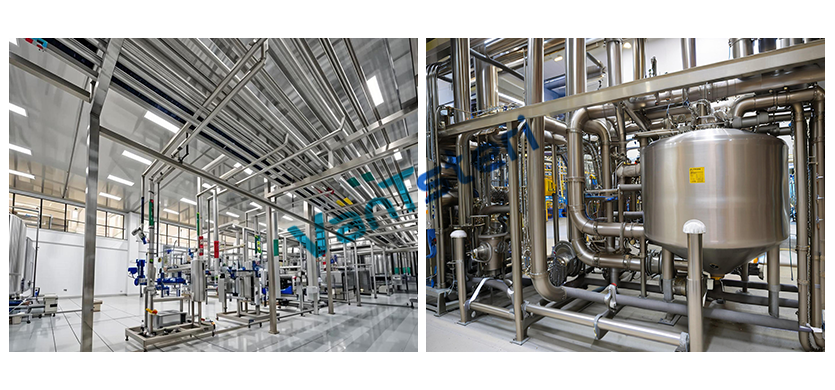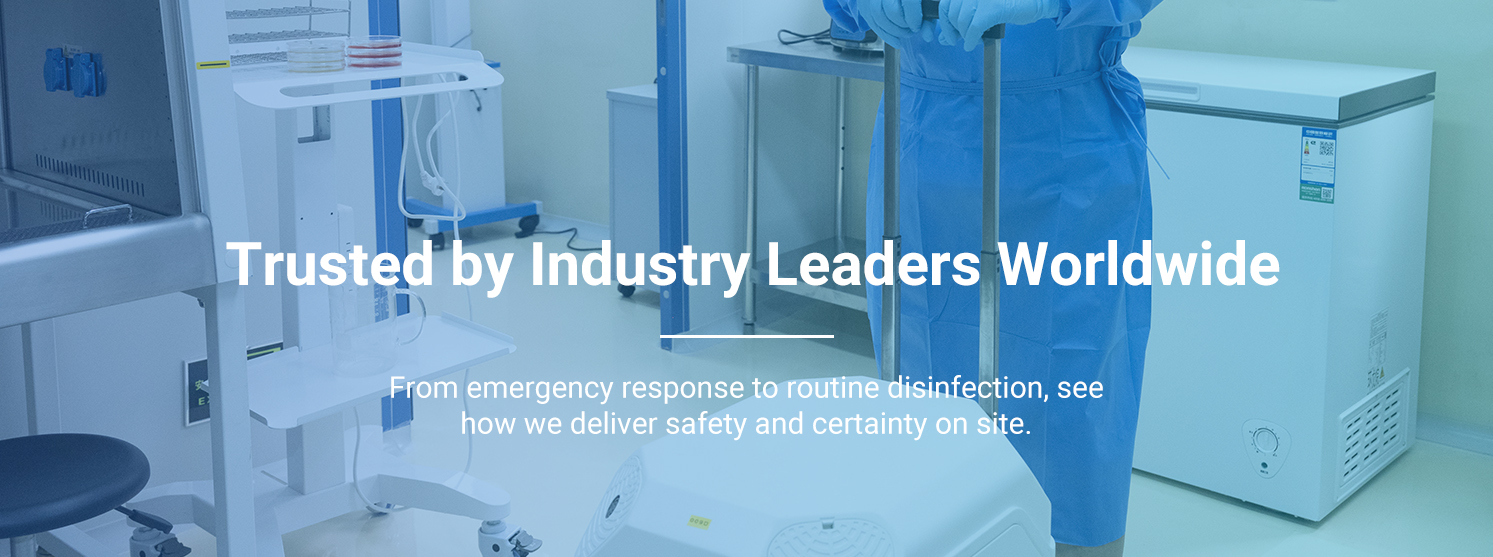Dairy Plant Pipeline Microbial Contamination Case
- Addtime: 2025-08-12 / View: 155
Industry Background and Challenges
Dairy production pipelines, due to long-term contact with nutrients such as milk fat and lactose, are highly susceptible to microbial contamination. Recalcitrant bacteria such as Bacillus and Pseudomonas, which are resistant to high temperatures and disinfectants, combined with the formation of biofilms, have become a core pain point in dairy companies' quality control. Traditional cleaning and disinfection processes (such as CIP/SIP) struggle to completely remove biofilms, leading to a high risk of cross-contamination and frequent product spoilage, seriously threatening food safety and corporate profitability.
Customer Pain Point Analysis
A well-known dairy company faced the following issues:
1. Bacillus contamination: After heat processing, Bacillus cereus remains in pipelines, causing product spoilage.
2. Pseudomonas spread: Humid environments accelerate bacterial growth, and equipment gaps become a source of contamination.
3. Biofilm barrier: Biofilms formed by milk fat residues protect bacteria and cannot be penetrated by conventional cleaning.
4. Long recovery time: Bacterial resurgence within 48 hours after traditional disinfection can impact production continuity.
Fantong Biotech's Customized Solutions
To address the above challenges, Fantong Biotech provides a comprehensive technical solution covering pretreatment, deep disinfection, residue control, and effectiveness verification:
1. Pretreatment: Efficient Biofilm Removal
Combined Physical and Chemical Cleaning: Utilizes food-grade acid/alkaline cleaning agents, combined with turbulent flushing technology, to remove residue from pipe walls and disrupt biofilm structures.
Dedicated Blind Spot Treatment: Pulse-type pressure cleaning is performed on valves, elbows, and other areas prone to residue accumulation to ensure no blind spots.
2. Automated Disinfection Process: Vaporized Hydrogen Peroxide Technology
Closed-Loop Penetrating Disinfection: Using Fantong's patented equipment, vaporized hydrogen peroxide is injected into closed pipe systems, penetrating deep into pores to kill microorganisms such as Bacillus and Pseudomonas, while also disintegrating the protective biofilm layer.
No Blind Spot Coverage: This technology achieves full coverage of pipes, eliminating the blind spots associated with traditional disinfection.
3. Precise Residue Control
Multi-Dimensional Testing: Utilizes pH testing, TOC analysis, conductivity monitoring, and other methods to ensure that cleaning agent residues meet standards.
Hydrogen Peroxide Residual Control: Residual levels are strictly controlled to ≤2 ppm through specialized testing equipment, ensuring product safety.
4. Effectiveness Verification System
Microbial Culture Testing: After disinfection, the total colony count at key locations (such as the inner pipe wall and filling port) is ≤10 CFU/mL.
Continuous Monitoring: Weekly routine testing prevents biofilm regeneration and ensures long-term cleanliness.
Implementation Results and Customer Benefits
1. Microbial Kill Rate: Bacillus detection was reduced from 100 CFU/cm² before disinfection to zero, and Pseudomonas was completely eliminated.
2. Production Resumption Efficiency Increased by 60%: Disinfection and resumption of production took only 24 hours, significantly reducing downtime losses.
3. Long-Term Stability Guarantee: Three consecutive months of monitoring showed no signs of biofilm regeneration in the piping system.
4. Compliance Exceeds Industry Standards: Residue control and hygiene indicators meet international food safety regulations.
Choose Fantong and build a safety barrier for your production line!













